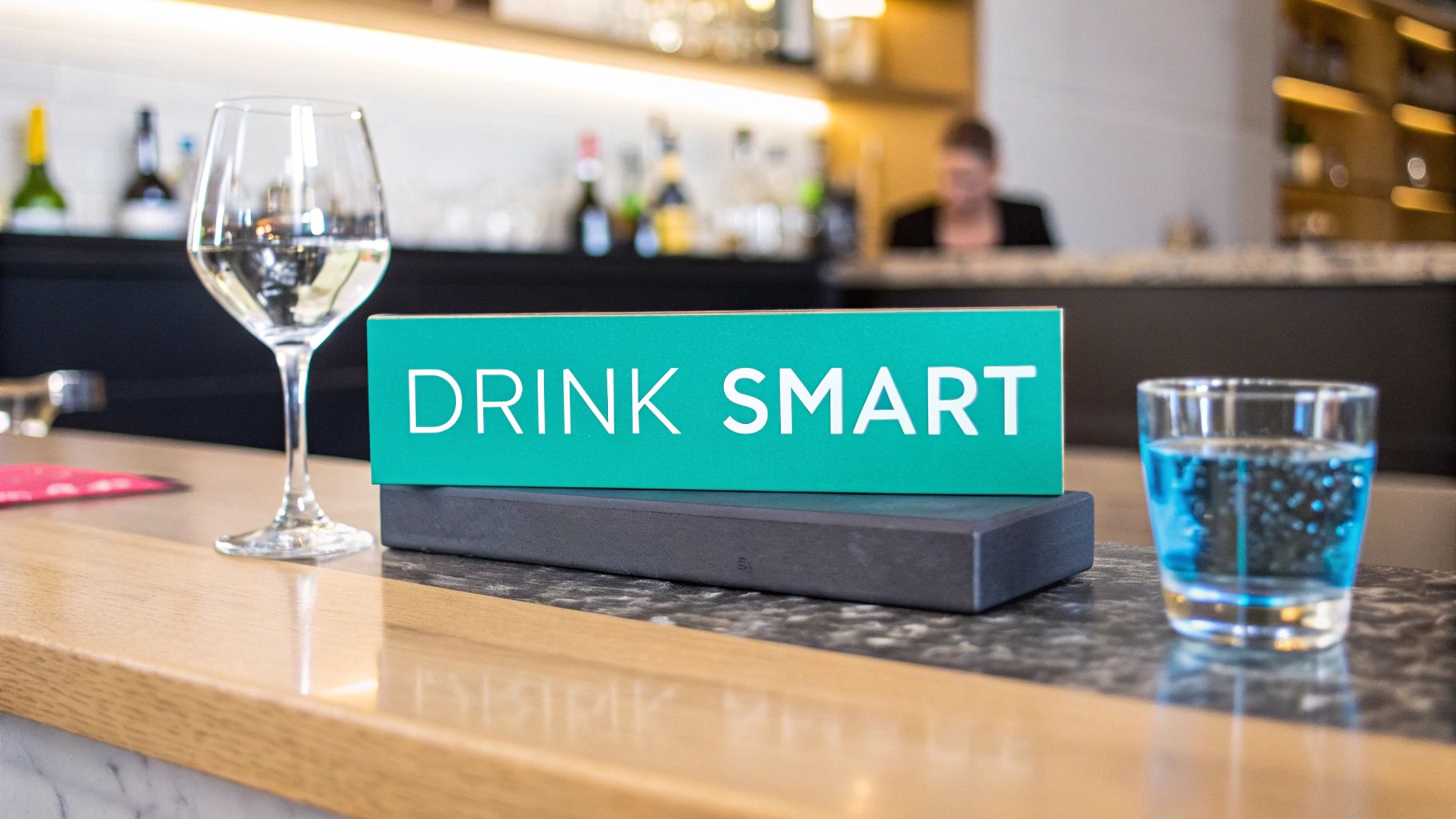

· By Annemarie
How to Drink Responsibly: Top Tips for Safe Enjoyment
The Art of Mindful Drinking: Beyond Just Drinking Less
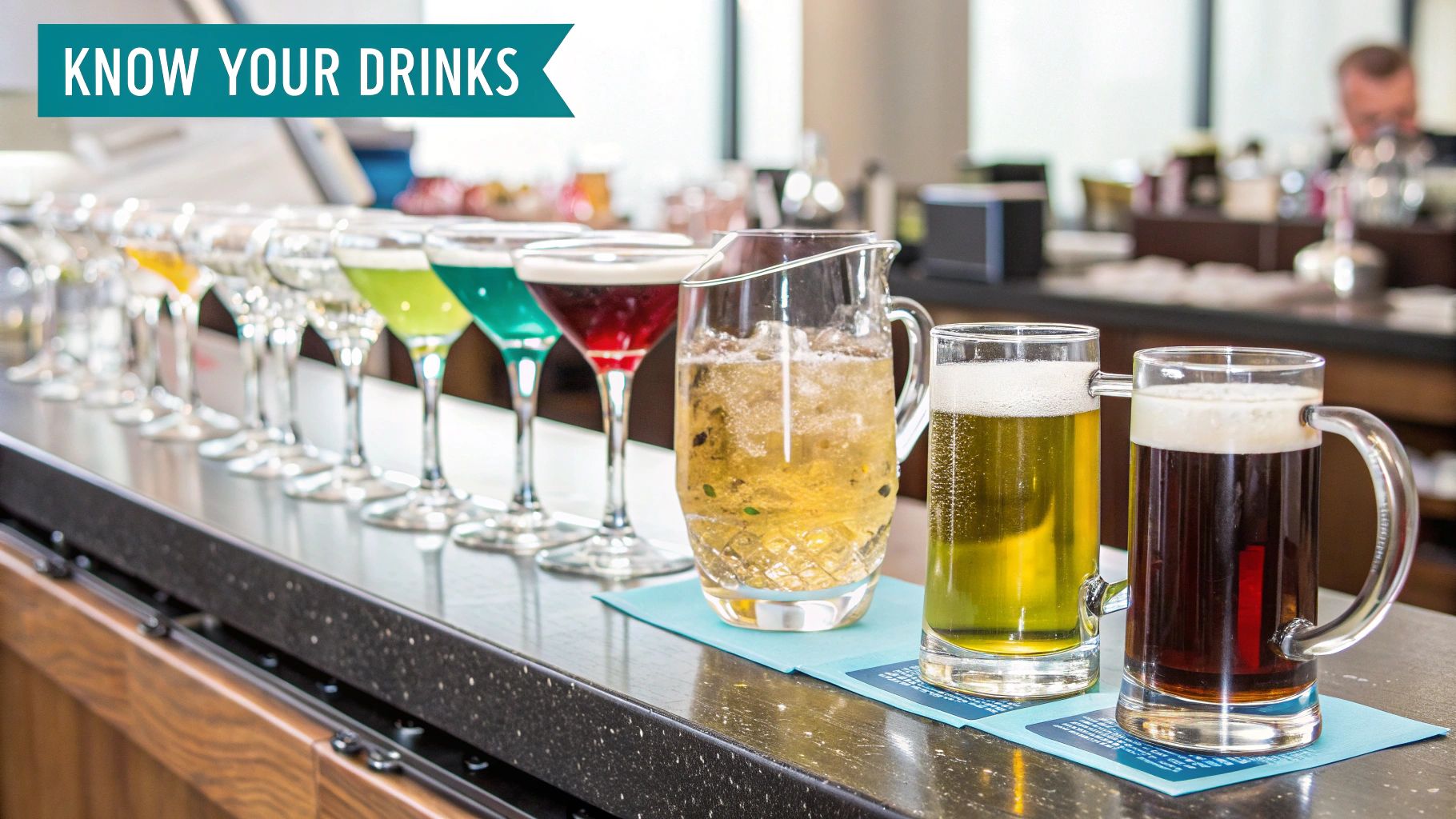
Responsible drinking isn't just about counting drinks. It's about developing a mindful relationship with alcohol, considering both the immediate and long-term effects on your health and well-being. This involves understanding your body's response to alcohol, recognizing your limits, and making informed choices in social situations. This foundation is key to truly enjoying alcohol responsibly.
Recognizing Your Limits: A Personal Approach
Responsible drinking is a personal journey. Factors like metabolism, body composition, and overall health play a significant role in how your body processes alcohol. What's moderate for one person might be excessive for another. That’s why understanding your individual "drinking blueprint" is crucial.
This personalized approach allows you to make smart decisions based on your body's unique responses, rather than relying solely on general guidelines. Life circumstances, such as upcoming work or family responsibilities or existing health conditions, also play a role in your choices.
Social Drinking vs. Problematic Patterns
Understanding your limits helps distinguish between healthy social drinking and potentially harmful patterns. Enjoying drinks with friends can be a positive social experience. However, it's essential to recognize when enjoyment crosses into excess.
Mindful drinking means being present and aware of your consumption habits. It involves acknowledging potential triggers for overindulgence and establishing healthy boundaries. Alcohol consumption varies globally. In 2025, countries like Russia, Greece, and Lesotho reported some of the highest per capita alcohol consumption.
For example, Russia averaged 16.8 liters of pure alcohol per person annually, compared to the global average of 5.8 liters. World Population Review provides detailed alcohol consumption statistics by country. WHO data also indicates that per capita consumption among drinkers is around 27 grams of pure alcohol daily, equivalent to about two glasses of wine. This highlights the importance of understanding responsible limits and consumption habits.
Setting the Stage for Responsible Enjoyment
Building a healthy relationship with alcohol is an ongoing process. It involves making informed choices that prioritize your physical and mental well-being. This might include developing strategies for managing social pressure and recognizing your individual limits.
Understanding how different factors affect your body's response to alcohol is another critical element. This creates a foundation for a sustainable approach to drinking, letting you enjoy social events while maintaining control and making responsible decisions.
Practical Strategies That Actually Work in Social Settings
This section offers practical advice for responsible alcohol consumption in social situations. These techniques, gathered from behavioral experts and social psychologists, will help you enjoy social events while staying in control of your drinking.
Pacing, Hydration, and Pre-Event Planning
Pacing is key to managing your alcohol intake. Alternating alcoholic beverages with water or non-alcoholic drinks slows your consumption and keeps you hydrated. This easy yet effective method can significantly improve your overall experience.
Hydration isn't just about pacing; it's vital for your well-being. Alcohol dehydrates you, which can worsen hangover symptoms. Consciously drinking water throughout the evening helps reduce these effects and supports your body's natural alcohol processing.
Setting a pre-event limit means deciding on a reasonable number of drinks before the event. This proactive approach creates clear boundaries and helps you stick to your goals when facing social pressures.
The infographic below illustrates recommended daily and weekly limits for responsible drinking.
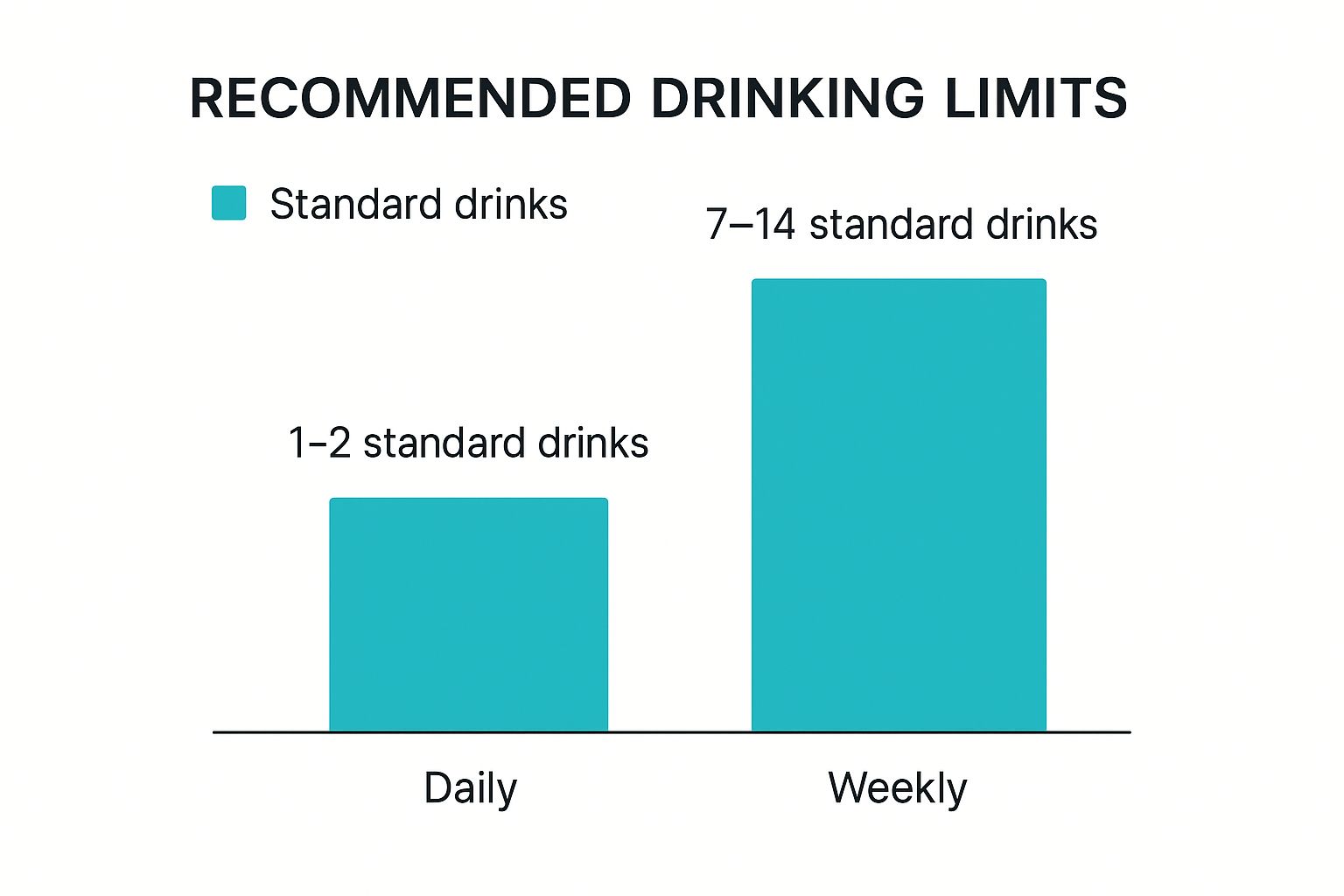
As the infographic shows, sticking to 1–2 standard drinks daily and 7–14 standard drinks weekly promotes responsible consumption. These visual reminders can help you stay aware of recommended limits.
Handling Peer Pressure and Navigating Open Bars
Social events often make responsible drinking challenging. Knowing how to handle peer pressure is crucial. Have polite but firm responses ready for when you're offered more drinks than you want. For example, a simple "I'm good for now, thanks" or "I'm pacing myself tonight" can effectively communicate your boundaries.
Open bars, while tempting, can lead to overconsumption. Think of an open bar as if you were paying for each drink. This mindset encourages mindful decisions and helps you stay within your pre-set limits. You're always in control of your choices, no matter how readily available the alcohol is.
Maintaining Social Connections Without Excessive Consumption
Responsible drinking doesn't mean sacrificing social enjoyment. Focus on conversations, dancing, or other activities that don't center around alcohol. This shifts the focus from drinking to connection and creates a more balanced experience.
Developing self-awareness of your drinking habits and motivations is important. Understanding your drinking patterns in specific situations can help you recognize triggers for overconsumption and develop healthier coping strategies. This awareness empowers you to make conscious, healthy choices. By incorporating these strategies, you can develop a positive and sustainable relationship with alcohol while fully enjoying social events.
To further illustrate these strategies, let's look at a comparison of some common responsible drinking techniques.
The table below, "Responsible Drinking Strategies Comparison," compares various responsible drinking techniques and their effectiveness in different social scenarios. It considers factors like ease of implementation and offers tips for success.
| Strategy | Effectiveness Rating | Best For | Implementation Difficulty | Tips for Success |
|---|---|---|---|---|
| Pacing (Alternating alcoholic and non-alcoholic drinks) | High | All social situations | Easy | Start with a non-alcoholic drink, and consistently alternate throughout the event. |
| Pre-event Limit Setting | High | Situations with potential for high alcohol consumption | Easy | Decide on a firm number and communicate it to a friend for accountability. |
| Hydration | High | All social situations, especially those involving physical activity or warm environments. | Easy | Carry a water bottle and refill it regularly. |
| Avoiding Open Bars | Medium | Situations with open bars or readily available alcohol | Medium | If possible, opt for events without open bars, or treat an open bar like a cash bar. |
| Polite Refusal Strategies | High | Situations with potential peer pressure | Medium | Practice polite but firm responses beforehand. |
| Engaging in Non-Drinking Activities | High | All social situations | Easy | Suggest activities like dancing, games, or conversation starters. |
| Self-Monitoring and Reflection | High | Long-term behavior change | Medium | Keep a journal or use a tracking app to understand your drinking patterns. |
This table provides a quick reference for various strategies. Combining multiple approaches, such as pacing and setting pre-event limits, often yields the best results. Remember, the most effective strategy is the one that works best for you and your individual circumstances.
Understanding Your Personal Drinking Blueprint
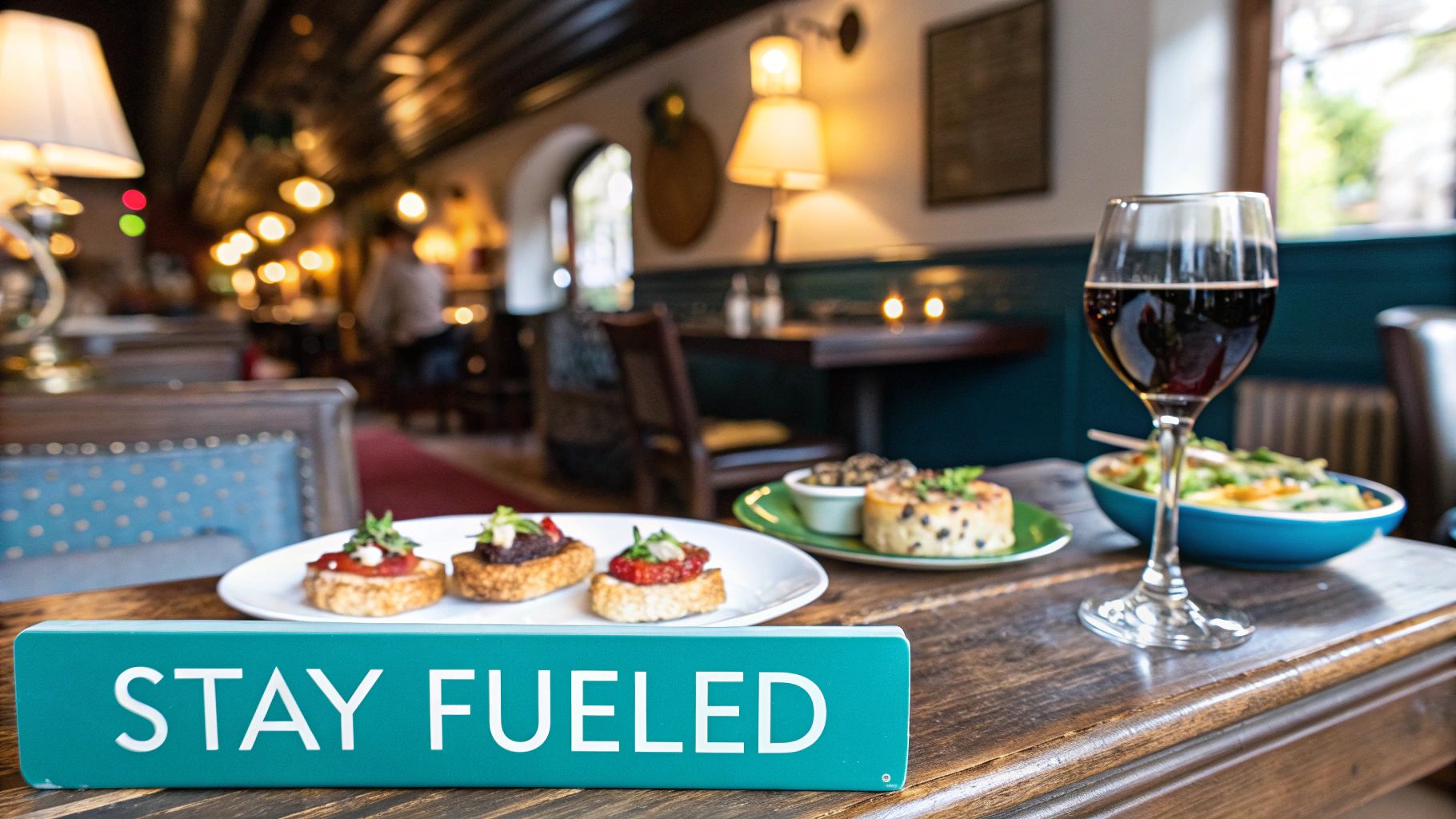
Everyone processes alcohol differently. Understanding your own personal blueprint is key to responsible and enjoyable drinking. This means taking a look at the factors that influence your intoxication threshold. With this knowledge, you can make smart decisions based on your body's reactions, not just how many drinks you've had or what others are doing.
Factors Affecting Your BAC
Your Blood Alcohol Concentration (BAC), the percentage of alcohol in your bloodstream, isn't just about how much you drink. Several things play a role in how quickly your BAC rises and falls, and how intoxicated you become:
- Weight: If you have a larger body mass, alcohol is distributed over a greater volume. This generally leads to a lower BAC than someone with a smaller body mass who drinks the same amount.
- Biological Sex: Due to differences in body composition and enzyme activity, women generally metabolize alcohol slower than men. This results in a higher BAC for women after consuming the same amount of alcohol.
- Medication Interactions: Some medications can interact with alcohol, potentially slowing its metabolism and increasing BAC, or causing other harmful health effects. It's always best to check with your doctor about possible interactions.
- Food Consumption: Eating before or while drinking slows alcohol absorption, lessening how quickly your BAC goes up. It's important to remember, though, that eating doesn't prevent intoxication completely.
Knowing your limits is essential. Learning to set healthy boundaries can help you navigate social situations involving alcohol.
Recognizing Your Body's Signals
Recognizing your body's unique warning signs is another important part of responsible drinking. These signals are different for everyone, but often involve subtle changes in:
- Mood: You might experience increased irritability, emotional swings, or feelings of sadness.
- Cognition: Look for signs like difficulty focusing, impaired judgment, or slowed reaction time.
- Physical Sensations: Early signs might include slight dizziness, loss of coordination, or slurred speech.
These early indicators of cognitive impairment often show up before more obvious physical symptoms. By paying attention to these cues, you can adjust how much you're drinking or stop altogether before becoming heavily intoxicated. This self-awareness is a cornerstone of responsible drinking.
Building Your Blueprint
You might be interested in: How to master...
By thinking about these factors and tuning in to your body's responses, you can develop a strong understanding of your personal "drinking blueprint." This is an ongoing process of:
- Honest Self-Assessment: Think back on past experiences to figure out your typical reactions to different amounts of alcohol.
- Mindful Consumption: Pay close attention to how you feel while you're drinking, making note of any changes in your physical or mental state.
- Respecting Your Limits: Once you know your limits, commit to staying within them, no matter the social setting.
This will help you enjoy alcohol safely and responsibly, reducing potential harm and building a healthier and more enjoyable relationship with alcohol.
The No-Alcohol Revolution: Beyond Basic Alternatives
The world of non-alcoholic drinks is evolving, offering a wider array of exciting options for those seeking mindful consumption. It's no longer limited to sugary sodas or plain water. This expanding market now boasts flavorful and sophisticated alternatives, allowing you to enjoy social settings without the alcohol. This shift empowers you to explore complex flavors and participate in social rituals while prioritizing your well-being.
Navigating the World of Non-Alcoholic Beverages
The rise of premium non-alcoholic options allows you to confidently explore menus and discover truly satisfying drinks. Seek out beverages crafted with the same care and attention as their alcoholic counterparts. For example, some non-alcoholic spirits replicate the botanical complexity of gin or the rich notes of whiskey, creating a comparable sensory experience. This allows you to enjoy the familiar rituals of mixing and savoring a well-crafted beverage, sans the alcohol.
These carefully crafted beverages are more than just substitutes; they are experiences in their own right. They offer a depth of flavor and aroma that rivals traditional cocktails. This allows you to fully engage socially without feeling like you're missing out. You might be surprised by the variety available, from non-alcoholic beers and wines to sophisticated zero-proof cocktails.
The Psychology of Ceremonial Consumption
Enjoying a drink is often intertwined with social rituals and celebrations. The act of raising a glass, the clinking sound, and the shared experience are powerful psychological cues that foster connection and festivity. Non-alcoholic drinks allow you to fully participate in these rituals without the effects of alcohol. This means you can still experience the celebratory aspects of social gatherings while honoring your commitment to responsible drinking. You can maintain the celebratory spirit without compromising your health and well-being.
Furthermore, choosing and savoring a premium non-alcoholic drink can be a mindful experience. It allows you to focus on the flavors, aromas, and social connection, enhancing the overall enjoyment of the moment. The no- and low-alcohol market is booming, reflecting a growing desire for moderation. The no-alcohol sector is projected to achieve a 7% volume CAGR from 2024 to 2028, attracting 61 million new consumers between 2022 and 2024. This trend toward healthier choices, especially among younger generations, signals a cultural shift towards responsible drinking. Find more detailed statistics here.
Embracing the Zero-Proof Lifestyle
Industry innovators are constantly pushing the boundaries of non-alcoholic beverages. They are developing increasingly complex and satisfying zero-proof options to appeal to even the most discerning palates. These innovative creations are changing how we perceive social drinking, offering a broader range of choices than ever before. You can now find non-alcoholic options to suit every taste and preference, allowing you to enjoy the full spectrum of flavors without the alcohol. Learn more in our article about How to Stay Hydrated While Drinking.
By embracing this evolving landscape, you can discover a new dimension of flavor and enjoyment while prioritizing responsible drinking. This shift toward more mindful consumption allows you to celebrate, connect, and savor the moment without compromise. This growing movement fosters a more inclusive social scene where everyone can participate and enjoy themselves, regardless of their drinking choices.
Strategic Preparation: Mastering Challenging Social Scenarios
Successfully enjoying a social event while drinking responsibly often begins with planning. Thinking ahead allows you to stay in control and have fun without going overboard. This means setting personal limits, anticipating potential challenges, and developing strategies to handle them effectively. This proactive approach helps create a positive and enjoyable experience.
Setting Consumption Guardrails and Contingencies
Just like creating a financial budget, setting consumption guardrails for alcohol is key. Decide on a reasonable limit before you start drinking and stick to it. This pre-commitment helps you resist impulsive decisions later and lets you truly savor the experience without overindulging.
Planning your transportation in advance is another crucial part of responsible drinking. Choose a designated driver, use a ride-sharing service like Uber or Lyft, or arrange for public transportation. A backup plan is essential to avoid making risky choices if you've had too much to drink.
Another helpful strategy is to enlist a supportive friend as an ally. Discuss your intentions for responsible drinking and ask for their support in staying within your limits. A trusted friend can help you navigate social pressure and offer encouragement throughout the evening. If you're considering non-alcoholic options, researching resources like this one on THC and CBD can be helpful.
Handling Social Pressure With Grace
Social gatherings can sometimes involve pressure to drink more than you intend. Preparing effective responses beforehand empowers you to maintain your boundaries with grace.
-
Celebratory Toasts: Participating in toasts is a social tradition, but you can always opt for a non-alcoholic beverage or simply raise your glass in acknowledgement without drinking.
-
Drinking Games: Politely declining participation in drinking games is perfectly acceptable. Explain that you're not playing tonight but are happy to cheer everyone on. This lets you stay involved without compromising your plan.
-
Persistent Offers: Having a few polite yet firm responses ready can help you decline additional drinks. "I'm pacing myself" or "I'm good for now, thanks," clearly communicates your boundaries while maintaining a friendly tone.
Preparing these scripts beforehand will help you navigate potentially awkward situations with confidence and maintain positive social interactions. For more tips, check out resources like How to master....
Creating a Moderation-Friendly Environment (For Hosts)
If you’re hosting, you can create a festive atmosphere that encourages moderation.
-
Offer Appealing Non-Alcoholic Options: Providing a variety of interesting non-alcoholic beverages beyond soda and water gives guests more choices and encourages responsible consumption.
-
Food and Activities: Focusing on delicious food and engaging activities shifts the focus from solely drinking, creating a more balanced and enjoyable experience for everyone.
-
Moderate Your Own Drinking: As the host, modeling responsible drinking behavior sets a positive example for your guests.
Let's explore the effects of different Blood Alcohol Content (BAC) levels. The table below provides a general overview, but individual responses can vary.
Blood Alcohol Concentration (BAC) Effects by Number of Drinks
| BAC Level | Typical Number of Drinks* | Physical Effects | Cognitive Effects | Legal Status for Driving |
|---|---|---|---|---|
| 0.02% | 1-2 | Slight relaxation, mild euphoria | Minor impairment of judgment | Legal |
| 0.05% | 2-3 | Lowered alertness, relaxed inhibitions | Reduced coordination, delayed reaction time | Legal (but impaired) |
| 0.08% | 3-4 | Significant impairment of motor coordination, balance, and speech | Impaired judgment and self-control | Illegal |
| 0.10% | 4-5 | Slurred speech, staggering, nausea | Significant cognitive impairment, difficulty making decisions | Illegal |
| 0.15% | 5-6 | Vomiting, loss of balance, significant motor impairment | Major loss of cognitive function, blackouts possible | Illegal |
| *Number of drinks varies based on factors like body weight, gender, and metabolism. |
This table illustrates how increasing BAC levels correlate with escalating physical and cognitive impairments. It's a crucial reminder of why responsible drinking and staying within legal limits is so important for safety.
By incorporating these strategies, you can create a truly memorable event where everyone feels comfortable and included, regardless of their drinking choices. This promotes a healthier and more positive approach to social gatherings.
Navigating the Ready-to-Drink Revolution Responsibly
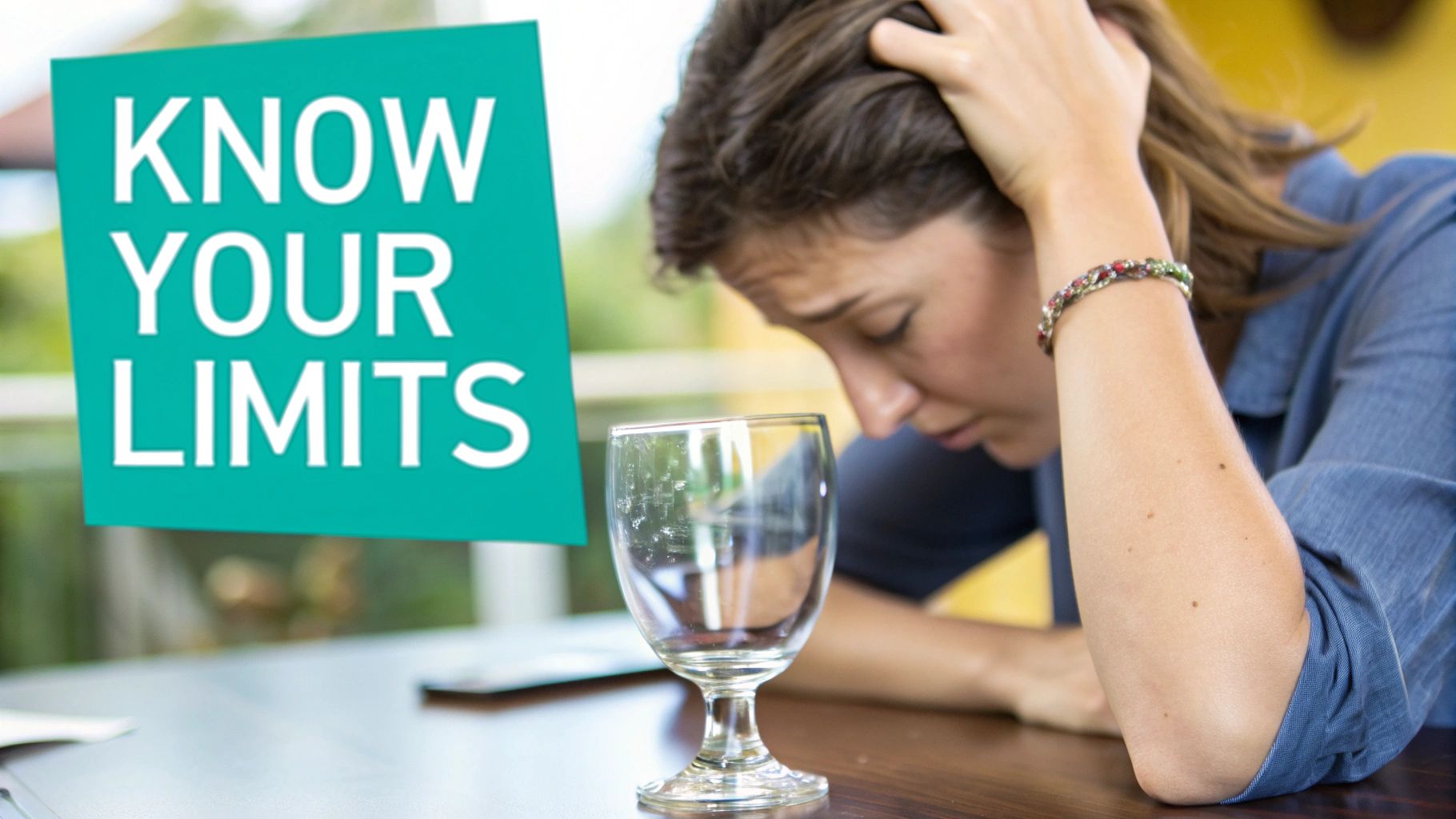
Ready-to-drink (RTD) beverages offer a new level of convenience for enjoying alcoholic drinks. While these drinks provide a handy way to enjoy alcohol, it's important to understand how to consume them responsibly. This section explores mindful decision-making and responsible consumption of RTDs.
Understanding Packaging Information: ABV vs. Volume
RTDs are available in a variety of sizes and alcohol concentrations. One of the first steps to responsible consumption is understanding what's in your drink. Pay attention to the alcohol by volume (ABV) and the total volume of the beverage.
A higher ABV in a larger can means a significantly higher alcohol intake. For example, a 12-ounce RTD at 7% ABV has more alcohol than a 5-ounce RTD at 5% ABV. Recognizing this difference is crucial for managing your intake. Don't let attractive packaging distract you from the actual alcohol content.
The Allure of Accessibility and Novelty: Managing the Risks
The convenience and wide availability of RTDs present a potential risk. While portability makes them appealing, easy access can lead to increased consumption if you're not careful. The constant influx of new flavors also encourages trying different varieties, which might contribute to unintentional overconsumption.
Being aware of these risks is paramount. Convenience shouldn't overshadow responsible decision-making. Consider the potential consequences before consuming an RTD, regardless of its novelty. Responsible drinking starts with mindful choices.
Integrating RTDs Into a Balanced Drinking Strategy
The RTD market is experiencing significant growth. Globally, there's been a 2% volume increase and a 6% increase in market value recently. Learn more about this trend. The RTD cocktail market, currently valued at $1.01 billion, is expected to reach $2.23 billion by 2029. This growth highlights the rising popularity of these beverages.
RTDs can be part of a balanced social drinking strategy when consumed responsibly. Their pre-portioned nature can help control intake, allowing you to track your consumption. However, remember to pace yourself and stay hydrated, just as you would with any alcoholic beverage.
Alternate alcoholic beverages with water or non-alcoholic options. Be mindful of your limits, as the effects of RTDs are no different than other alcoholic drinks.
Building a Sustainable Relationship With Alcohol
Developing a healthy relationship with alcohol is a journey. It's about creating lasting change that aligns with your overall well-being and life goals. This means understanding your personal relationship with alcohol and developing sustainable habits for responsible enjoyment.
Assessing Your Consumption Patterns: An Ongoing Dialogue
Think of your relationship with alcohol as an ongoing conversation. Regularly assess your drinking habits to identify potential patterns and make adjustments as needed. This self-reflection is crucial for maintaining a balanced approach.
Tools like journaling or using tracking apps can help you monitor your alcohol intake and identify any triggers for overconsumption. This allows you to pinpoint specific situations or emotions that might lead to excessive drinking. Then, you can develop healthier coping mechanisms. For example, noticing that you tend to drink more when stressed allows you to implement alternative stress-reducing strategies, like exercise or mindfulness practices.
Recognizing Early Warning Signs: Preventing Problematic Behaviors
Developing a sustainable relationship with alcohol also involves identifying and addressing potential warning signs early on. Pay attention to subtle changes in your behavior or drinking patterns. These changes could indicate a developing problem.
Are you consistently exceeding your intended drinking limits? Do you find yourself experiencing negative consequences due to your drinking, such as strained relationships or difficulties at work? If so, it's important to acknowledge these signs and take action. Speaking with a trusted friend, family member, or health professional can provide valuable support and guidance.
Integrating Responsible Drinking Into a Holistic Wellness Perspective
Responsible drinking is just one piece of the overall wellness puzzle. It's interconnected with other aspects of your well-being, including mental and physical health, along with your social connections.
Consider how your drinking habits fit into your broader lifestyle. Are you prioritizing healthy sleep, exercise, and nutrition? Are your social activities centered exclusively around alcohol? Or do you have other interests and hobbies that bring you joy? Finding a healthy balance across these different aspects of your life supports a more sustainable relationship with alcohol.
Establishing Personal Boundaries That Support Your Wellbeing
Setting clear boundaries is essential for maintaining a healthy relationship with alcohol, especially in social situations. This involves being assertive about your limits and communicating them clearly to others. Remember, you have the right to refuse a drink without explanation or apology.
Developing strong communication skills and polite but firm responses can help you navigate social pressure with confidence. For example, you might say, "I'm pacing myself tonight," or, "I'm sticking with non-alcoholic drinks this evening." Practicing these phrases beforehand can make it easier to communicate your boundaries effectively. This empowers you to enjoy social events on your own terms while prioritizing your well-being. This doesn't mean avoiding social occasions involving alcohol. It means choosing to engage in a way that aligns with your values and boundaries.
Enjoy life’s moments without the worry of a hangover with Upside Hangover Sticks. Our convenient, on-the-go jelly sticks are formulated with natural ingredients to support your body's natural processes and help you wake up feeling refreshed. Visit Upside Hangover Sticks to learn more and experience the difference.
